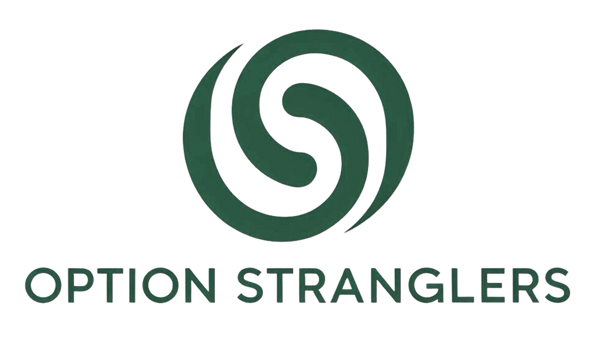
Advanced Options Strategies: Spreads and Combinations
Options trading opens a world of opportunity for investors seeking to expand their capabilities beyond simple directional plays. Once you've mastered the fundamentals, the next step is learning to manage risk, maximize reward, and capitalize on different market conditions through advanced options strategies. In this guide, we dive deep into powerful tools like vertical spreads, straddles, strangles, iron condors, and more. These strategies, while more complex, are essential for anyone who wants to become a self-sufficient trader, achieve financial freedom, and break free from the traditional 9-to-5 rat race.
This article is your gateway to smarter trading. By the end, you’ll understand:
- What each strategy is and how it works
- When to use it based on market conditions
- The real-world pros and cons
- How to visualize and interpret profit/loss profiles
Whether you're looking to supplement your income, hedge your portfolio, or trade for a living, these advanced strategies offer the flexibility and control you need.
Strategy Breakdown
A vertical spread involves buying and selling options of the same type (calls or puts), same expiration date, but different strike prices.
Types:
- Bull Call Spread: Buy a call at a lower strike and sell a call at a higher strike.
- Bear Put Spread: Buy a put at a higher strike and sell a put at a lower strike.
How it works: You reduce the cost of a directional trade (compared to a long call or long put) by selling an option to partially finance the one you buy. The trade-off is limited profit potential.
Profit/Loss Profile:


2. Straddles
A straddle involves buying a call and a put with the same strike and expiration. This is a neutral strategy betting on volatility.
How it works: You make money if the stock makes a big move in either direction. It's often used ahead of earnings announcements or major news events.
Profit/Loss Profile:

3. Strangles
A strangle is similar to a straddle but with out-of-the-money options—buying a call above and a put below the current price.
How it works: It’s cheaper than a straddle and requires an even larger move to become profitable. Traders use it when they expect explosive volatility but want to reduce the upfront cost.
Profit/Loss Profile:

4. Iron Condor
An iron condor is a combination of a bear call spread and a bull put spread. It profits when the stock remains within a defined range.
How it works: This strategy earns you a net credit upfront. Your goal is for all options to expire worthless, allowing you to keep the premium.
Best for: Sideways markets or low volatility environments.
Profit/Loss Profile:

A variant of the iron condor, the iron butterfly sells a straddle and buys wings (OTM call and put) for protection.
How it works: It offers a higher max profit than the iron condor but at the cost of a narrower range of profitability.
Profit/Loss Profile:

How They Work: Key Concepts
To effectively trade spreads and combinations, you must understand a few core principles:
- Defined Risk and Reward
- Spreads and combos often limit both max gain and max loss, making them safer than naked options.
- Net Credit vs. Net Debit
- Credit strategies like iron condors and cash-secured puts give you upfront cash.
- Debit strategies like vertical spreads and straddles require an investment but can offer higher upside.
- Break-Even Points
- Always calculate your breakeven to evaluate risk vs. reward. Tools like profit/loss charts and payoff diagrams help visualize outcomes.
- Volatility Sensitivity
- Strategies like straddles and strangles thrive on high implied volatility.
- Iron condors and butterflies are best in low-volatility environments.
Case Examples
Case Study 1: Bull Call Spread on TSLA
- Stock Price: $700
- Buy Call @ $700 (Debit $25)
- Sell Call @ $740 (Credit $10)
- Net Debit: $15
- Max Profit: $25 (width of spread) - $15 = $10
Why use it? TSLA is expected to rise but not rocket. You cap your profit but reduce cost compared to buying a long call.
Case Study 2: Iron Condor on SPY
- Sell 410 Put / Buy 405 Put
- Sell 430 Call / Buy 435 Call
- Net Credit: $2.00
- Max Risk: $3.00
- Max Reward: $2.00
Why use it? You expect SPY to stay within the 410–430 range for the month. If it does, you keep the premium.
Case Study 3: Long Straddle on NVDA Before Earnings
- Stock at $480
- Buy 480 Call and 480 Put
- Total Cost: $22
- Breakevens: $458 / $502
Why use it? NVDA earnings are known to move the stock sharply. If the move is large enough, this trade can be profitable regardless of direction.
Pros and Cons of Advanced Strategies

Conclusion: Take Control of Your Financial Future
Mastering spreads and combinations isn’t just about having more tools—it’s about trading with clarity, confidence, and consistency. These strategies enable you to tailor trades based on market conditions and personal risk tolerance.
Whether you're tired of the 9-to-5 grind, seeking freedom through smarter investing, or simply want to build self-sufficiency as a trader, advanced options strategies are your next step forward.
At www.optionstranglers.com.sg we offer:
- In-depth live 1-1 sessions / group classes
- Trade examples and breakdowns
- Community mentorship and support
👉 Ready to upgrade your strategy and trade like a pro? Visit www.optionstranglers.com.sg and start your journey to financial freedom today.
Your future is an option. Choose wisely.
Disclaimer: Options involve risk and are not suitable for all investors. Always consult with a financial advisor before investing.
